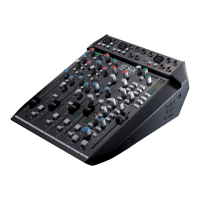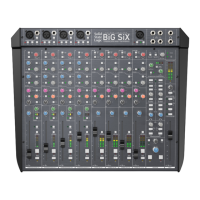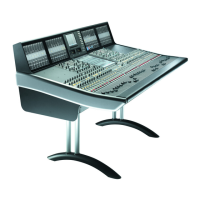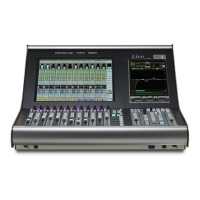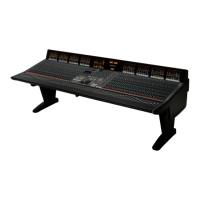iJack and Headphones
The iJack and headphone sockets are located to the right of
the transport control panel
.
iJack: Allows the connection of an external line level signal source (such as an
iPod or MP3 player) to be switched directly to the Matrix’s monitors.
Headphones: Headphone connection
Data Connections
Both Network and USB connections must be made between Matrix and the computer.
Network
³ A standard RJ45 connector for Matrix-Workstation network data. A 3m crossover cable is provided which should be used
to make a direct connection to the ‘Network’ port on the workstation computer - see the various setup examples on Pages
5 though 7 for an illustration of this and other connection methods.
USB
³ Use the 3m USB-A to USB-B cable provided to connect the Matrix to a free USB port on your workstation computer. This
connection carries USB keyboard commands generated from the console soft keys and is used to control the DAW via its
supported keyboard shortcuts, supplementing the existing MIDI DAW control offered on Matrix.
Dening QWERTY Keyboard Nationality (Mac)
³
identify the new keyboard. In order to identify the keyboard type, the Mac then requires the key to right of the left
Shift
key to be pressed. In the SSL
Misc soft key set (see Page 45), there is a key labelled KeybID. Pressing this key will send
the required keystroke to the Mac to correctly identify Matrix as a UK keyboard.
Foot Switch Inputs
Sw1 & Sw2
Foot switch trigger inputs
X-Rack Interface
D9 female serial data port to facilitate connection to an SSL X-Rack for the transfer of Total Recall information. A suitable 2m
cable is supplied with each X-Rack chassis.
Conguration of Data Connections
Network Wiring
To ensure the fastest possible communication between your workstation computer and Matrix, and to simplify the wiring
between Matrix and computer, Matrix communicates with your workstation over Ethernet using the ipMIDI driver to emulate a
multiport MIDI interface. To ensure minimum latency ipMIDI uses multicast UDP rather than TCP/IP. This means that:
• The network connection should be as short as possible and should only use routers that can support high data transfer
rates. Problems have been experienced with some domestic routers, particularly when used with Pro Tools. Typical
symptoms of a slow network connection are:
- Channel controls and scribble strips on channels 9-16 fail to update reliably when using the
Channel keys.
• Because ipMIDI uses multicast UDP packets, messages between one computer and Matrix will be received by all other
computers on the network, potentially causing problems in installations with more than one Matrix. The UDP packets
Chapter 1 - Setup
4
Matrix
2
Owner’s Manual
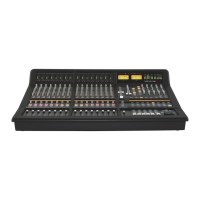
